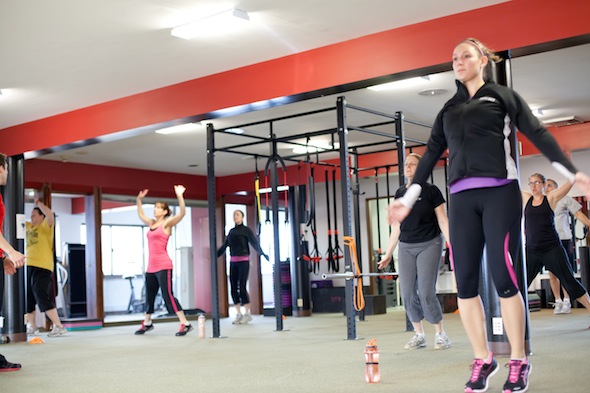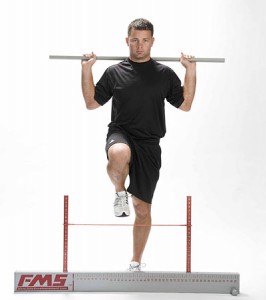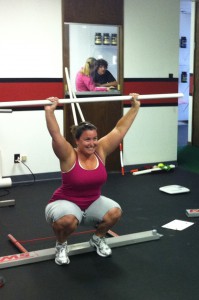 Note from MR: Steve Long and Jared Woolever are two guys I have mentored for years in the fitness industry.
Note from MR: Steve Long and Jared Woolever are two guys I have mentored for years in the fitness industry.
Not only are they great guys, but they are doing amazing things for people who work in large group settings.
If you work in a large group setting, or have considered doing it in the future, Steve and Jared are two amazing guys to learn from. Start by reading this post, and then be sure to check out their new Smart Group Training 365 product.
But enough from me – here’s Steve!
———–
At one point in my career I thought that corrective exercise in bootcamp was impossible.
Let’s be real – just trying to get clients to show up on time is a tough challenge. So doing things like making sure form is tight, ensuring they are doing the correct progressions, and making sure they are doing corrective exercises for any issues that they have seemed like a daunting task, especially with that many clients working out at one time.
My business partner and friend Jared Woolever and I have always been really particular about the quality of our training, so when we started our bootcamps we were really disappointed with what we were originally putting out there.
We knew that personal training was leaps and bounds better than bootcamp.
At the same time, we knew that these clients were still in better hands with us, as opposed to the park bootcamp down the street.
We made a vow to make bootcamp as individualized as possible and turn bootcamps into a respectable way to train large groups of people. Since then we have dedicated our lives to increasing the quality of group personal training worldwide.
We started with using the Functional Movement Screen (FMS) to find the big issues that our clients had, then studied the FMS systems and tweaked them to make them work in group training.
From there we mentored under a few industry leaders like Mike Robertson, and honed our skills on program design and overall training quality.
Our exposure to these industry leaders and dedication to improving the group training industry has helped us create a pretty progressive group personal training program. Finding people’s weakest links and correcting them instead of avoiding them or hurting the client is a major contributor to the quality of this program.
Now I know what you’re thinking here…
“Great story Steve, but how to I add corrective exercise to my group personal training program?”
It took a lot of work to figure out how to do this, but now that we have done the work we know that it’s really not that difficult if you have good systems.
There are a lot of details that go into the process, but there are also some solid principles that will help you make sure you are clearing your clients movement dysfunctions, decreasing their chances of injury, and helping them break through plateaus.
Using these principles should make it much easier to begin to clear your client’s compensations and dysfunction in a large group setting.
Here are some random thoughts and tips to get your clients better results in a bootcamp or large group setting.
Perform a Movement Screen!
 A good movement screening system is the bedrock to making this happen.
A good movement screening system is the bedrock to making this happen.
Honestly, a good movement screening system is the bedrock to any great fitness program or business.
As you will see below, screening makes all of the following points possible.
It really doesn’t matter what screening system you use as long as you are using one. I use the FMS because of the organization, research, scoring system, and consistency. The point is to make sure you have a solid repeatable system that allows you to re-screen and see progress.
Corrective Exercise is the Lowest Level Progression
Having multiple progressions for each exercise is imperative when designing a group personal training program.
Each person is different and will have different needs.
This is why you need a few variations of each exercise in your workout. When designing exercise progressions it’s a great idea to make sure the lowest level progression is an exercise that will correct the movement dysfunction instead of strengthen it.
Red Light Dysfunctional Patterns and Do Correctives Instead
If someone has a movement dysfunction that keeps them from performing a particular pattern without compensation, they need a corrective exercise strategy.
If you do a screen, you can immediately tell a client which exercises will cause more harm than good on those particular patterns. Make sure that they do a corrective exercise from your progression list instead, and you’ll be light-years ahead of the competition.
Add Individual Correctives into Your Warmup and During Rest Periods
Now that you know which patterns need to be corrected, it’s time to add the individual exercises to the workout design.
 Teach your clients correctives for their movement dysfunction and have them do those exercises in your warmup and during rest periods.
Teach your clients correctives for their movement dysfunction and have them do those exercises in your warmup and during rest periods.
Again, we use the FMS hierarchy to find the clients weakest link and focus only on that pattern during these times.
We know that we are going to have a hard time fixing the squat if the active straight leg raise pattern is dysfunctional. That’s why we would have the client do active straight leg raise correctives until the it’s clear and then move on to the squat if it hasn’t already been cleared by the active straight leg raise corrections.
Give Clients Homework
Lets face it, just doing correctives in the workout is only going to take your clients so far.
But, if they do their corrective exercises at home, they can clear their dysfunctions much, much faster.
Give them just one or two exercises that don’t take long to perform, and you will accelerate what you are seeing happen in the gym.
In our case, we have printouts of a lot of our go to correctives that we can hand our clients in case they forget. We also have a pretty extensive video database so we can send them links to their correctives also.
Have a System
Having an organized system is what makes this easy.
Making sure that you have a screening system, along with a long term program with red lights and progressions written out is huge. Getting organized makes it possible to add corrective exercise and improve your program every day.
If you’re interested in learning more about how we do this, we have organized our entire program into a done for you system that you can use.
 If you would like to take your group personal training to the next level, check out SGT 365. SGT 365 is a year of high quality group personal training program design, with video of each of the 300+ exercises in our program plus much more. For more information check it out below
If you would like to take your group personal training to the next level, check out SGT 365. SGT 365 is a year of high quality group personal training program design, with video of each of the 300+ exercises in our program plus much more. For more information check it out below
==> Smart Group Training 365 Program <==
Yours in Health,
Steve Long
P.S. – Please note that the SGT 365 Program is on sale this week only for $100 off the retail price. Pick up your copy of SGT 365 today!
